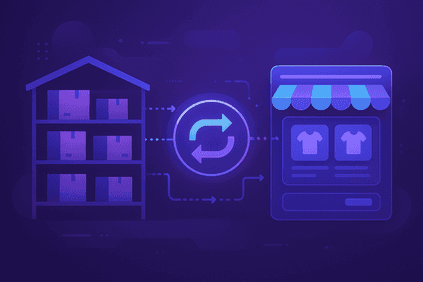Load Testing Medusa.js Checkout with k6 (Complete Guide)

When building an e-commerce platform with Medusa.js, ensuring your checkout process can handle high traffic loads is crucial for business success. A slow or failing checkout directly impacts revenue and customer satisfaction. In this article, we'll explore how to create comprehensive load tests for the Medusa checkout flow using k6, focusing on the complete customer journey from cart creation to order completion.
Understanding Medusa Checkout Flow and Load Testing Challenges
The Medusa checkout process involves multiple API calls and state transitions that must work seamlessly under load:
- Cart Creation: Initialize a new shopping cart for the customer
- Product Addition: Add items to the cart with inventory checks
- Address Setting: Configure shipping and billing information
- Shipping Selection: Choose delivery options and calculate costs
- Payment Processing: Handle payment collection and authorization
- Order Completion: Finalize the purchase and create the order
Each step depends on the previous one, creating a complex chain of operations that needs to be tested under realistic load conditions. The challenge is simulating authentic user behavior while maintaining data consistency and avoiding test interference.
Prerequisites
Before implementing load tests for your Medusa checkout flow, ensure you have the following setup:
Environment Setup
- k6 installed: Follow the k6 installation guide for your operating system
- Medusa instance running: Have a local or staging Medusa store accessible (typically at
http://localhost:9000)
Medusa Store Configuration
- Region created: At least one region configured in your Medusa admin (needed for cart creation)
- Products and variants: Test products with available inventory and valid variant IDs
- Shipping options: Configured shipping methods for your test region
- Payment providers: At least one payment provider enabled (e.g., manual payment provider for testing)
- Publishable API key: Generated from your Medusa admin dashboard for API authentication
k6 Executors
k6 offers various executors to simulate different load patterns. Understanding these helps design realistic test scenarios:
per-vu-iterations: Each virtual user runs a fixed number of iterations (great for checkout flows)constant-vus: Maintains a constant number of virtual users for a durationramping-vus: Gradually increases/decreases virtual users over timeconstant-arrival-rate: Maintains a steady request rate regardless of response timesramping-arrival-rate: Gradually changes the arrival rate of new iterations
The choice of executor should align with your specific testing requirements, business goals, and target performance metrics. Each executor type provides different insights and simulates distinct real-world scenarios, so select based on your performance testing objectives.
Practical Example: Complete Medusa Checkout Load Test
Initial Setup
Here's our k6 script that demonstrates comprehensive checkout flow testing:
import { check } from "k6"; import http from "k6/http"; export const options = { scenarios: { placeOrder: { executor: "per-vu-iterations", vus: 5, iterations: 2, maxDuration: "10m", }, }, }; const PRODUCT_VARIANT_ID = "variant_01234567890"; // Replace with actual variant ID const REGION_ID = "reg_01234567890"; // Replace with actual region ID const SHIPPING_OPTION_ID = "so_01234567890"; // Replace with actual shipping option ID const PAYMENT_PROVIDER_ID = "pp_system_default"; const BASE_URL = "http://localhost:9000/store"; const PUBLISHABLE_API_KEY = "pk_01234567890"; // Replace with actual API key const HEADERS = { "Content-Type": "application/json", "x-publishable-api-key": PUBLISHABLE_API_KEY, }; function fetch(method, path, body = null) { const url = `${BASE_URL}${path}`; const payload = body ? JSON.stringify(body) : null; return http.request(method, url, payload, { headers: HEADERS }); } export default function () { // Step 1: Create Cart const createCartRes = fetch("POST", "/carts", { region_id: REGION_ID }); check(createCartRes, { "cart created": (r) => r.status === 200 }); const cartId = createCartRes.json("cart.id"); // Step 2: Add Item to Cart const addItemRes = fetch("POST", `/carts/${cartId}/line-items`, { variant_id: PRODUCT_VARIANT_ID, quantity: 1, }); check(addItemRes, { "item added": (r) => r.status === 200 }); // Step 3: Set Shipping Address and Email const setAddressRes = fetch("POST", `/carts/${cartId}`, { shipping_address: { first_name: "John", last_name: "Doe", address_1: "Nordmarksvej 9", city: "Billund", country_code: "dk", postal_code: "7190", phone: "1234567890", }, email: "john.doe@example.com", }); check(setAddressRes, { "address set": (r) => r.status === 200 }); // Step 4: Set Shipping Method const setShippingRes = fetch("POST", `/carts/${cartId}/shipping-methods`, { option_id: SHIPPING_OPTION_ID, }); check(setShippingRes, { "shipping set": (r) => r.status === 200 }); // Step 5: Create Payment Collection const createPaymentCollectionRes = fetch("POST", "/payment-collections", { cart_id: cartId, }); check(createPaymentCollectionRes, { "payment collection created": (r) => r.status === 200, }); const paymentCollectionId = createPaymentCollectionRes.json( "payment_collection.id" ); // Step 6: Initialize Payment Session const initPaymentSessionRes = fetch( "POST", `/payment-collections/${paymentCollectionId}/payment-sessions`, { provider_id: PAYMENT_PROVIDER_ID, } ); check(initPaymentSessionRes, { "payment sessions initialized": (r) => r.status === 200, }); // Step 7: Complete Cart (Place Order) const completeCartRes = fetch("POST", `/carts/${cartId}/complete`); check(completeCartRes, { "cart completed": (r) => r.status === 200 }); }
How It Works
- Configuration Setup: The script defines essential configuration including virtual users (VUs), iterations, and API endpoints.
- Medusa API Integration: Uses the Medusa Store API with proper authentication via publishable API keys.
- Sequential Checkout Flow: Each step builds upon the previous one, simulating realistic user behavior.
- Comprehensive Validation: Each API call includes checks to verify successful responses, ensuring the entire flow works under load.
- Realistic Load Simulation: The test runs 10 concurrent virtual users, each performing 5 complete checkout iterations, simulating real-world traffic patterns.
Running the Tests
Execute your load tests with these commands:
# Test complete checkout flow performance k6 run place-order.js # Run with custom configuration k6 run --vus 50 --iterations 100 place-order.js
Cloud-Based Load Testing
Consider running your k6 tests in the cloud environment to achieve more stable and reliable results. Cloud-based testing eliminates local system limitations and enables testing with thousands of concurrent users, providing consistent performance metrics across test runs.
For large-scale load testing that requires significant compute resources, you can deploy k6 tests on AWS infrastructure. Check out our comprehensive guide on E-commerce Load Testing with k6 and AWS ECS Fargate to learn how to set up scalable, distributed load testing infrastructure that can simulate thousands of concurrent users without the constraints of local hardware.
Interpreting Results
k6 provides comprehensive metrics to analyze your Medusa store's performance:
- Response Times: Monitor API response times for each checkout step
- Success Rates: Track the percentage of successful transactions
- Throughput: Measure requests per second your store can handle
- Error Analysis: Identify bottlenecks in specific checkout steps
Conclusion
Load testing your Medusa.js checkout flow with k6 is essential for ensuring reliable e-commerce operations. Through proper test implementation, monitoring, and continuous optimization, you can maintain high performance even during peak traffic periods. Regular load testing helps identify bottlenecks early, validate performance improvements, and build confidence in your store's ability to handle customer demand.
FAQ: Medusa Checkout Load Testing with k6
1. I need a more performant system. What should I check first?
Start by monitoring key metrics like CPU utilization, memory usage, and database performance. Implement distributed tracing to identify specific bottlenecks in your checkout flow. Consider scaling individual components (database, API servers), adding Redis caching layers, optimizing database queries, and implementing CDN for static assets. For expert assistance with performance optimization and architecture scaling, contact us for professional help.
2. I expect around 1,000 orders placed per minute. Is Medusa a good framework for this volume?
Absolutely! Our comprehensive load tests have proven that Medusa can handle significantly more than 200 complete checkout flows per minute. With proper configuration, caching strategies, and infrastructure setup, Medusa easily scales beyond this requirement. The framework's modular architecture and Node.js foundation provide excellent performance characteristics for high-throughput e-commerce scenarios.
3. Is API load testing enough to ensure my system will handle traffic? No, you need to consider the entire system architecture. If you're using a storefront, make sure to run end-to-end tests with browser context to test the complete user experience. Also remember to account for potential third-party integrations like Stripe (payment processing), Avalara (tax calculation), ShipStation (fulfillment), email providers, and analytics services - these external dependencies can become bottlenecks under load.
4. Why is load testing the Medusa checkout flow important?
It protects revenue by ensuring critical transactional paths stay fast and stable under peak demand, exposing latency, contention (DB locks, inventory checks), and integration bottlenecks before real users feel them.
5. What k6 metrics matter most initially?
p95 & p99 latency per step, request failure rate (<1%), HTTP 5xx / key 4xx ratios, checks passed %, iteration duration distribution, throughput (RPS), and correlation with infra metrics (DB connections, CPU, cache hit rate).
6. How many virtual users should I start with?
Begin small (5–10 VUs) to validate flow, ramp to expected peak (based on historical concurrent checkouts), then test 1.5–2× peak for headroom using ramping-vus or ramping-arrival-rate patterns.
7. How do I handle product/inventory test data safely?
Seed multiple variants with ample stock, rotate IDs from an array, optionally fetch inventory before add, and avoid exhausting a single SKU to prevent artificial failures.
8. What defines a performance regression?
10–15% increase in p95 latency, drop in successful order completion rate, rising error/failure %, or reduced throughput at the same load versus last accepted baseline; encode these as k6 thresholds to fail CI automatically.




